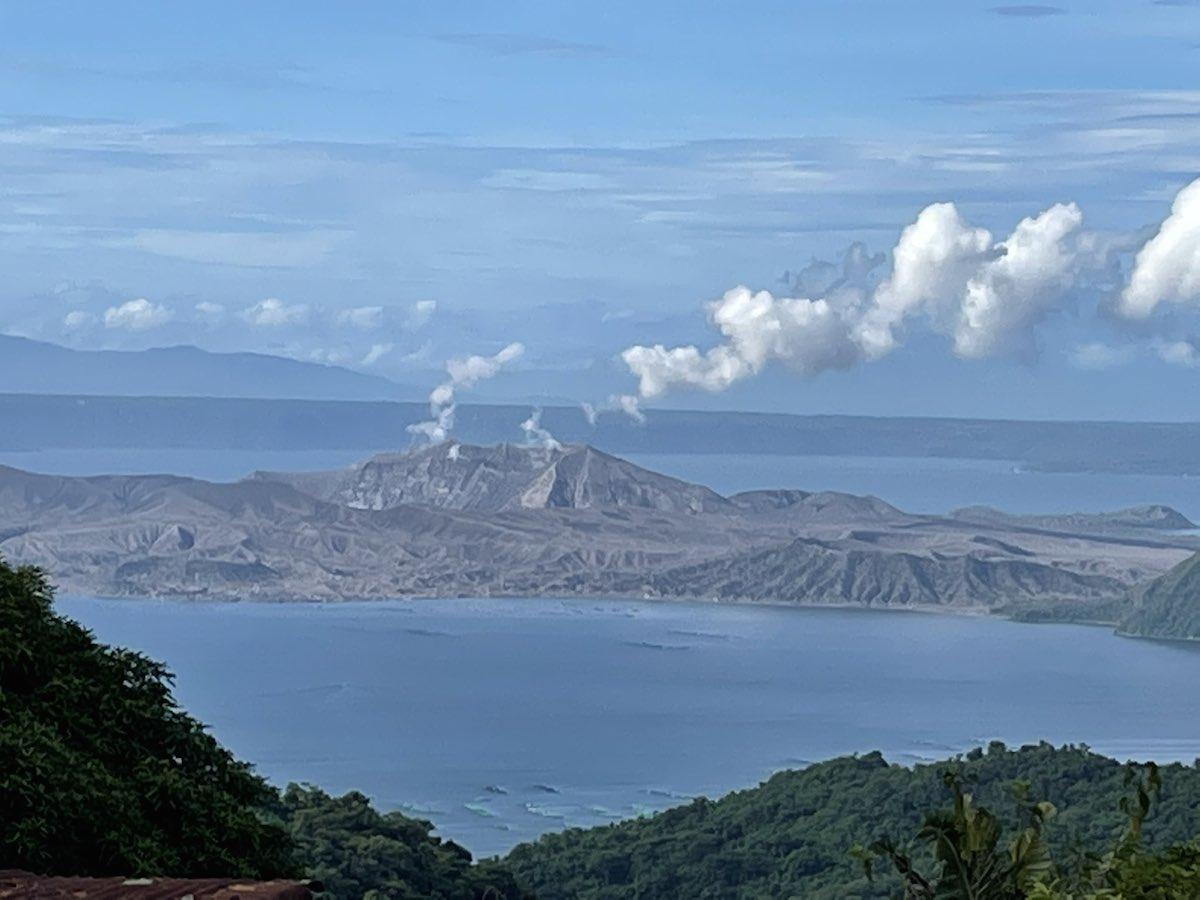4 minor phreatic eruptions observed at Taal Volcano —PHIVOLCS

Four minor successive phreatic eruptions were recorded over Taal Volcano on Friday morning, the Philippine Institute of Volcanology and Seismology (PHIVOLCS) said.
“Weak phreatic activity is likely driven by the continued emission of hot volcanic gases at the Taal Main Crater and could be succeeded by similar events,” PHIVOLCS said in an advisory.
“The background levels of volcanic earthquake activity and ground deformation detected at Taal indicate that unrest is unlikely to progress into magmatic eruption,” it added.
PHIVOLCS said the phreatic eruptions occurred during the following periods:
- 7:03 AM to 07:09 a.m.
- 07:17 AM to 07:18 a.m.
- 07:52 AM to 07:54 a.m.
- 07:57AM to 08:00 a.m.
White steam-laden plumes of up to 300 meters rose from the volcano’s main crater and drifted southwest, according to PHIVOLCS.
The daily sulfur dioxide (SO2) emission from the volcano slightly increased to 2,346 tonnes on Thursday.
PHIVOLCS defines phreatic eruption as “steam-driven explosion that occur when water beneath the ground or on the surface is heated by magma, lava, hot rocks, or new volcanic deposits.”
Alert Level 1 is maintained over the volcano, which means the volcano is still in abnormal condition and should not be interpreted to have ceased unrest nor ceased the threat of eruptive activity.
At Alert Level 1, the possible hazards are sudden steam-driven or phreatic explosions, volcanic earthquakes, minor ashfall and lethal accumulations or expulsions of volcanic gas.
These hazards may threaten areas within the volcano island.
PHIVOLCS also warned the communities around Taal Caldera about potential long-term health impacts of frequent exposure to high concentrations of volcanic SO2.
The agency prohibited the entry into the Taal Volcano Island, permanent danger zone or PDZ, especially the vicinity of the Main Crater and the Daang Kastila fissure.
Local governments should monitor and assess preparedness of their communities and undertake appropriate response measures to mitigate the hazards.
Civil aviation authorities must advise pilots to avoid flying close to the volcano as airborne ash and ballistic fragments from sudden explosions and wind-remobilized ash may pose hazards to aircraft, PHIVOLCS said. —Joviland Rita/KBK, GMA Integrated News



